Table of Contents
Professional Learning
-
Overview
One of the most important components in the transformation to digital learning is ensuring that educators have adequate training to effectively use digital tools and applications. Sustainable professional learning models, geared specifically to support teachers in student centered, digital learning environments can positively impact the teaching and learning experiences. Increased digital learning opportunities for students and educators demands a systemic approach to professional learning that supports teachers throughout their careers. Professional learning that takes place as an ongoing process, based on relevant research is the key to ensuring high-quality, relevant, college and career ready learning experiences for students. In addition to providing professional learning opportunities for teachers and administrators, districts and schools should prepare a professional learning plan for non-instructional staff. All staff members will need to utilize the digital tools and resources in some capacity and should be adequately trained.Resources
- Standards for Professional Learning Resources
- Professional Learning in a Digital Age
- Culture Shift: Teaching in a Learner-Centered Environment Powered by Digital Learning
- National Education Technology Plan 2010 (NETP)
- Empowering Educators through Professional Learning Toolkit
- Navigating the Digital Shift
- State Digital Learning Exemplars
Facilitator Guide
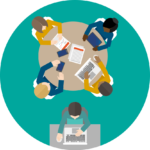 The Facilitator Guide – Professional Learning provides education leaders with the information and resources they need to conduct a professional learning session. Participants will:
The Facilitator Guide – Professional Learning provides education leaders with the information and resources they need to conduct a professional learning session. Participants will:
- Learn more about professional learning strategies.
- Complete the professional learning readiness assessment.
- Discuss the results of the assessment with your peers and strategize ways to improve professional learning in your school/district.
- Learn best practices from your colleagues.
- Develop and maintain relationships with other district and state leaders.
-
Planning
A district professional learning plan provides the opportunity to establish short- and long-term professional learning goals for instruction, to articulate how professional learning will take place, and delineates desired outcomes. Approaching professional learning planning comprehensively allows districts to achieve efficiencies and reduce redundancy across schools. Districts with successful professional learning initiatives typically align goals, activities and outcomes across their departments, schools, and district. A professional learning plan should include the following essential elements: needs assessment; goal setting; and evaluation of success.Needs Assessment
As with any plan, an early needs assessment can help focus professional learning efforts on activities that reflect gaps and priorities for classroom instruction related to digital learning. A clear understanding of learning needs also provides concrete outcomes or targets for professional learning opportunities and typically provides insight into the best methods for accomplishing these goals.Resources
- Learning Forward’s Professional Learning Plans Workbook
- Maryland Teacher Professional Development Planning Guide
- Wisconsin’s Writing a Professional Development Plan (PDP)
- ISTE Standards
- CCSSO’s Interstate Teacher Assessment and Support Consortium Learning Progressions (InTASC)
- Technological Pedagogical Content Knowledge Framework (TPACK)
- Substitution Augmentation Modification Redefinition Model (SAMR) and Curriculum Redesign
- ASCD’s Five Levels of Professional Development Evaluation
- Texas Teacher School Technology and Readiness “STaR” Chart
From Policy to Practice
The state of Virginia funds one instructional technology (IT) resource teacher for every 1000 students across the state. The districts have the flexibility to employ an integration specialist, a data analysis specialist or a combination integration/data analysis specialist.More
The role of the resource teacher is to work directly with teachers and administrators to integrate technology in the classroom, to train teachers to use technology effectively, and to assist with curriculum development as it relates to educational technology. Leaders use management systems to provide online and hybrid professional development sessions to schools. Web 2.0 tools such as blogs and wikis help foster participation and collaboration and the development of 21st Century skills.
-
Goals & Key Elements
Goal setting is a hallmark of success with any initiative. Key aspects of high-quality goal setting include: exploring research and evidence-based practices; defining goals and objectives; defining desirable outcomes such as educator knowledge, skills, and abilities, and developing a logic model or theory of change about how professional learning will ultimately meet outcomes. National groups such as Learning Forward, the International Society for Technology in Education (ISTE), and the Council of Chief State School Officers (CCSSO) have put forth guidelines to help assure professional learning success. These standards emphasize activities that intertwine practice, research and theory. Briefly summarized below, these guidelines for creating activities include:- Job-embedded learning activities that directly connect practical challenges with tangible, relevant, and feasible solutions. (ISTE, CCSSO)
- Rooted in sound pedagogy that is based on relevant research and grounded in learning theory. (Learning Forward; ISTE, CCSSO)
- Aligned with learning goals and curriculum to provide focus for professional learning activities. (Learning Forward, CCSSO)
- Informed by data generated systematically from a variety of sources to establish learning priorities and document progression. (Learning Forward, CCSSO)
- Collaborative with local and distant colleagues to increase sharing of effective practices, reflection on/troubleshoot less successful efforts, and reduce teacher isolation. (Learning Forward, CCSSO)
- Build capacity to improve and/or expand effective practice. (Learning Forward, ISTE, CCSSO)
- Utilize blended learning modalities that can increase the accessibility and applicability of professional learning objectives. (Learning Forward, ISTE)
- Contribute to measurable outcomes among students and teachers. (Learning Forward)
- Tie to career pathways, including developing leadership pipelines. (CCSSO)
-
Evaluation of Success
Documenting evidence of participants’ learning, progress, and sustainability will help to measure both short-term and long-term success. Feedback loops can be beneficial for monitoring progress toward learning goals and identifying new areas for professional learning when there are authentic measures that are embedded in the learning process. Opportunities for feedback loops may include informal and formal data collection and analysis for with administrators, professional learning providers, instructional coaches, teachers and staff. The best teachers do not approach instruction and student learning from one dimension. They understand that the contents of curriculum, whether it comes in the form of a printed book or digital content will need to be supplemented. Each student has a few optimal ways to learn, and the great benefit of digital content is that it can be made available in all of the various formats that might be useful and necessary. Likewise, do not assume that a single source of digital content will meet all needs in a classroom. Teachers need time to meet with each other and share the digital “jewels” they have found in their explorations and explain how they have integrated those resources into their lessons. This form of “peer encouragement” is the most effective way to spark new practices and address old fears and concerns that educators have in making changes to their instructional practices. Therefore, as your school or district expands its use of digital content, do not lose sight of the change management aspects of that transition. Be prepared for varying levels of enthusiasm among teachers regarding the use of non-printed materials in the classroom. Celebrate and publicize successes as they surface. And continually re-evaluate the approach and resources used for locating and identifying digital content to make that part of the process as satisfying and efficient as possible. Finally, be sure to track and evaluate how different content is used with students over time. Ultimately the effectiveness of the content should be reflected in student learning. -
Opportunities
Technology offers the opportunity for teachers to become more collaborative and extend learning beyond the classroom. Educators can create learning communities composed of students; fellow educators in schools, museums, libraries, and after-school programs; experts in various disciplines around the world; members of community organizations; and families. This enhanced collaboration, enabled by technology offers access to instructional materials as well as the resources and tools to create, manage, and assess their quality and usefulness. To enact this vision, schools need to support teachers in accessing needed technology and in learning how to use it effectively. Educators need continuous, just-in-time support that includes professional development, mentors, and informal collaborations. -
Formal Professional Learning
Educators typically participate in formal professional learning opportunities as requirements for state certification and district employment. Formal opportunities include university level courses either online, in-person or blended, webinars, workshops, district or school led communities of practice, and coaching/mentoring partnerships. Below are several examples of formal professional learning opportunities that can effectively support educators.Coaches
Instructional technology/digital learning facilitators or coaches have proven to be valuable in providing support to educators as they shift to new instructional practices. This direct one-on-one and small group instructional assistance can show teachers how to modify and deliver their lessons to take advantage of new technology resources. To be effective, districts should consider assigning at least one expert to each school (depending upon size) in order to accelerate the adoption of new forms of instruction and assessment.Communities of Practice (COP)
Online, face-to-face and hybrid models of communities of practice provide educators with the ability to connect with fellow educators both asynchronously and in real-time to share resources, successes and challenges. Teachers and administrators benefit from the ongoing support available through these communities as they grow and expand to support the diverse needs of educators. Communities may be school, district or state based and/or connect teachers of similar content areas or grade levels nationally or internationally. Communities of practice differ from educators’ online courses. Online courses are more structured, typically requiring specific content and activities within a specific time period. Many of them do contain elements of a CoP to facilitate interaction and support among participants.Examples of Communities of Practice
-

Indiana’s Online Communities of Practice
Indiana Department of EducationOrganized around teachers’ content areas, these groups were created to boost collaboration and peer-to-peer sharing of online resources aligned to Indiana’s Academic Standards.
-
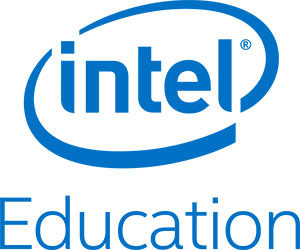
Intel’s Teacher Engage Community (sponsored resource)
Intel EducationThis online community provides ongoing support for teachers as they implement new teaching practices by connecting educators who implement technology into their classrooms and promoting student-centered approaches. It offers 21st century classroom resources, online courses, and active dialogue within a global network.
-
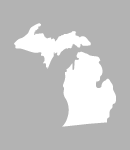
LearnPort
Michigan Department of EducationLearnPort serves all members of Michigan’s educational community, including faculty, administrators and staff in schools, affiliated professional organizations, and college and university education students and their teacher education faculty, as well as guests and collaborating users by providing high-quality online professional development, collaboration spaces and other resources for the education community.
- Effective Coaching by Design
- Differentiated Literacy Coaching
- U.S. Department of Education’s Connect and Inspire: Online Communities of Practice in Education
- Online Communities of Practice: What Works
- EdTech Leaders Online: A case study of scalable online professional development programs
- Statewide Use of Professional Learning Communities
From Policy to Practice
The goals for the Apache Junction United School District’s (AJUSD) Collaboration Coaching Program are to build capacity in 21st century learning, which is built into the Arizona College and Career Ready Standards (AZCCRS).More
All AJUSD collaboration coaches are classroom teachers that have made the commitment to participate in the program and work alongside their peers to develop an engaging, creative, and collaborative learning environment for students. The trainings focus on technology integration, lesson design and pedagogy. While Collaboration Coaching provides ongoing, job-embedded professional development through learning communities, the format is different at each school based on the site vision and goals. In all cases, where teams engage students in rigorous learning, as they support and help build capacity with the AZCCRS. Every year site principals collaborate with their coaches to develop goals, providing direction and support for their staff. Areas of focus include content-based or 1-to-1 professional learning communities, building capacity with the AZCCRS, setting goals to increase rigor, and co-facilitating project based learning models. In addition to the support of the collaboration coaches, all professional learning provided by the district office is designed with technology integrated into the instruction.
-
-
Self-Directed
In addition to the formal professional learning opportunities and requirements, educators also engage in self-directed professional learning experiences both in and outside of their work environments. Self-directed informal experiences may include participating in social media feeds or reading a book or paper to support the teaching experience. Informal, job embedded learning opportunities such as discussions with fellow colleagues, sharing lessons plans or requesting feedback from students can also support an educator’s learning experiences. Many teachers also participate in more formal approaches of self-directly professional learning such as organizing a personalized learning network to track and build on their professional learning experiences.Personalized Learning Networks
Online tools and social media have sparked new opportunities for educators to participate in self-selected, professional learning opportunities and to build their personalized learning networks (PLN) and to collaborate with peers. PLNs may include professional learning groups (online and in-person), COPs, listservs, blog subscriptions, newsfeeds and social media tool such as Facebook, Twitter, Instagram, Pintrest, Ning and Edmodo.-

Lesson-Sharing Sites Raise Issues of Ownership, Use
This article discusses lesson-sharing sites, key sources for common-core related PD, and the issues with ownership. “Say you’re a teacher and you’ve created a bang-up lesson on how to teach fractions on the number line. Everyone in the faculty room loves it. Fellow teachers are begging for copies. Your principal suggests you post it online […]
-
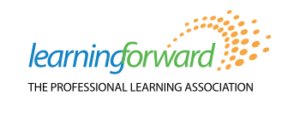
Professional Learning in the Learning Profession: A status report on teacher development in the United States and abroad
National Staff Development CouncilThis report provides an overview of professional learning and includes examples of formal and informal professional learning opportunities with some research regarding the effectiveness of self-directed learning opportunities.
-
Teachers Guide on Creating Personalized Learning Networks
Educational Technology and Mobile LearningThis web page provides a general overview of PLNs and multiple resources for educators related to PLNs.
-
Top State-by-State Twitter Chats
eSchoolnewsThis article provides an overview of statewide Twitter chats related to education technology.
From Policy to Practice
Sponsored by the Indiana Department of Education, the hashtag #INeLearn is used for both asynchronous sharing daily, as well as a synchronous conversation (TwitterChat) every Thursday night. The #INeLearn Chat Blog documents the topic schedule and moderators for these Twitter gatherings.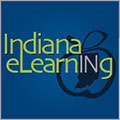
-
-
Recognizing Professional Excellence
Teachers who invest in the professional learning needed to create effective digital learning environments can receive recognition for their skills in a variety of ways. Gone are the days when teachers were largely recognized only for learning associated with requirements to continue their certification or employment. Teachers can now pursue professional awards, portfolios, badges and micro credentials that document and verify learning, thereby differentiating their skill set from that of other less tech-savvy teachers.Professional Portfolios
Portfolios provide teachers with the prospect to show growth over time and provide examples of effective teaching practices that can be shared with others. Portfolios are increasingly electronic based and can also be a learning tool for the teacher and their peers regarding lessons learned, best practices and the professional learning experiences that have been most beneficial.Badges and Micro Credentials
Digital badges and micro credentials for knowledge acquisition have recently entered the education space. Badges are digital icons or logos on a web page. Typically badges are warded by institutions, organizations, groups, or individuals, badges signify accomplishments such as completion of a project, mastery of a skill, or marks of experience. (Educause Learning Initiatives: 7 Things you need to know about badges). Badges can provide incentives for participating in professional learning opportunities and an additional opportunities for collaborating with fellow educators. Numerous organizations and higher education institutions are now offering badges. Badges and and micro credentialing provide a shift in the way that educators demonstrate achievement and mastery.Resources
- A Guide to Understanding Student E-Portfolios: K-12 Digital Portfolio Programs for College and Career Readiness
- Digital Promise Micro-Credential Initiative
- Micro-Credentials: Empowering Lifelong Learners
- Open Badges Infrastructure (OBI)
- 7 Things You Should Know About Badges
- Digital Badge Systems: The Promise and Potential
- What is a badge?


